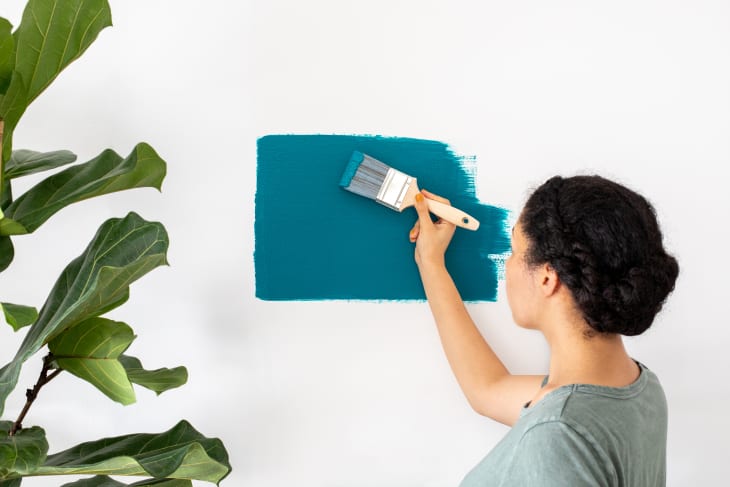How to Choose the Right Paint Finish for Your Home Project

When it comes to making a big impression for not a lot of money (or time!) it’s hard to beat the transformative power of paint. But while painting a room is an easy project, there’s one part of the process that can have even experienced DIYers second-guessing themselves: choosing the paint! Not only are there hundreds of colors to choose from, in every shade of the rainbow and more—there are also multiple sheens (or finishes) to pick from that can dramatically change the look of the end product, depending on which you choose.
The most common sheens include flat, matte, eggshell, satin, semi-gloss, and high-gloss or glossy, though some paint companies include finishes beyond these. The basic ingredients of all paints are mostly the same, says Octave Villar, applications lab manager at Behr Paint Company; those include pigment (which is like a powder or chalk), resin (like a glue), and solvent (either water or oil). Using these ingredients in different ratios helps contribute to the creation of the different finishes—so flat paints tend to include more chalky, powdery pigment, while high-gloss paints tend to include more gluey resin.
These slight ingredient differences affect how much light a paint reflects—or, in effect, its sheen. A flat paint reflects no light; a high-gloss paint reflects lots of light. Along with those slight ingredient differences come some differences in wear, Villar says. Because flat paints include a little less resin, they’re faster to dry than high-gloss paints; on the other hand, they’re also a little less sturdy against frequent scrubs.
So how in the world do you pick which finish goes where? Villar and his colleague Erika Woelfel, VP of Color and Creative Services for Behr Paint Company, give the scoop on finding the right finish for your project.
Flat or matte finishes
The low light-reflecting properties of these paints make them super forgiving for rough surfaces, says Woelfel—think stucco-textured walls or walls with shoddy patch jobs. “The flat surface absorbs light instead of reflecting it, so it hides any cracks and marks,” Woelfel says. “Higher gloss will certainly highlight if there is an imperfection, but flat finishes will mask those.”
These finishes are a good pick for ceilings that have a popcorn finish, or rental walls that have seen better days. Woelfel also likes the style of this finish even if you don’t have texture problems to hide. “I like the look—that dry surface appealing to me, especially when the trim is a higher sheen. I like that contrast,” she says.
Eggshell or satin finishes
These are the two most common choices for walls across the industry, and eggshell in particular is Behr’s best-selling sheen. These are both solid choices for walls in living rooms or bedrooms. These finishes have some of the style of the flat and matte paints, with a bit more durability against scuffs.
Semi-gloss and high gloss finishes
Because these paints are so reflective, they tend to draw attention to cracks, holes, and other flaws—so they’re best used on even, properly prepped walls. Both are easier to wipe clean than the typical matte or flat paint, too, thanks to the higher resin content. That makes them better picks for high-traffic areas, like mudrooms or hallways, and areas that need frequent cleaning, like kitchen backsplashes or exterior doors.
Woelfel says another smart way to use glossy paints is as an accent—on trim, or on a front door for a pop of high-impact color. Both uses help draw attention to architectural details that might be lost with matte finishes. Glossy paint can help brighten up rooms, too. “Back in the day the high gloss colors used to go up on the ceiling, which is an old designer trick,” Woelfel says. “At night, when there was low lighting, those glossy walls and ceiling bounced light around even more to make it feel brighter.” If you have an untextured ceiling you’re trying to make feel higher, this vintage trick might be worth a try.
Villar notes that even though these higher-sheen paints are more durable, they’re also more likely to be damaged by cleaners that contain alcohol. “Be careful with cleaners that are alcohol-based. That can dissolve the paint,” he says. Instead, look for cleaners that are non-abrasive so that you don’t end up with matte splotches on your otherwise glossy surface.